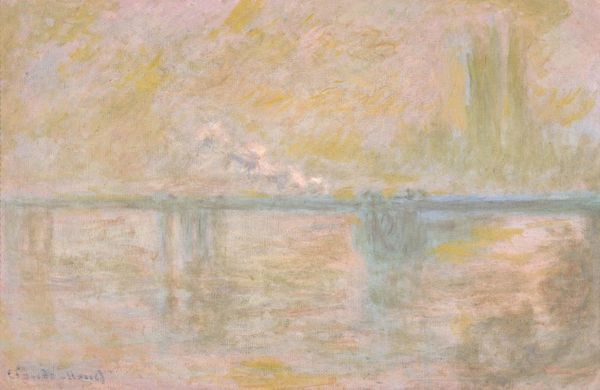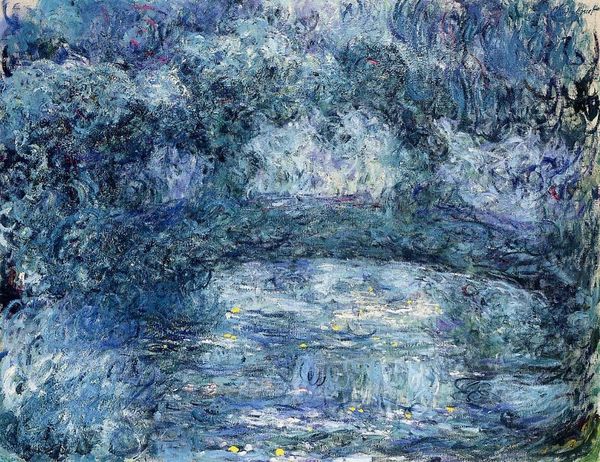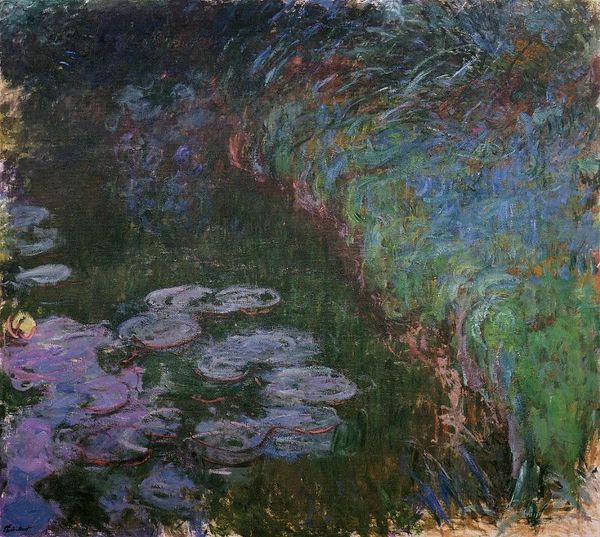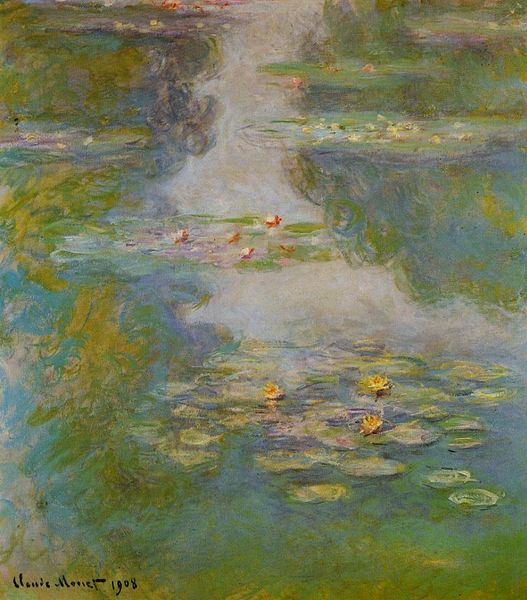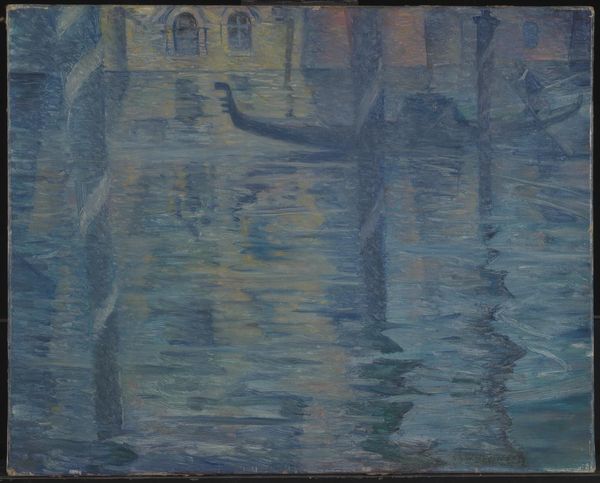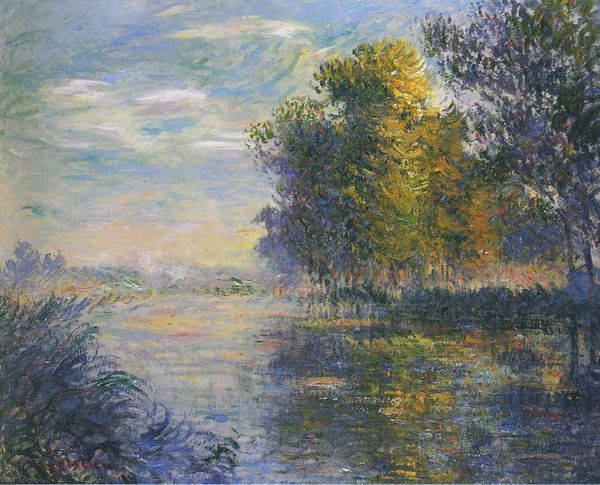
Copyright: Public domain
Editor: Here we have Claude Monet’s "Waterloo Bridge," painted in 1901 using oil on canvas. I find the color palette quite calming, almost melancholic, with the predominance of blues and purples. What do you see in this piece, particularly regarding symbolism? Curator: For me, "Waterloo Bridge" acts as a conduit connecting the physical and psychological landscapes of a city. Bridges are powerful symbols: transitional spaces suggesting movement, connection, and sometimes, division. Monet repeatedly painted the Thames, and in doing so, invoked not just a physical place, but a cultural touchstone pregnant with meaning. How does the industrial haze affect your reading? Editor: That’s interesting. I hadn't thought of the industrial context. I suppose the haze mutes the vibrancy, maybe hinting at the pollution of the industrial era or perhaps veiling the memory of place? Curator: Precisely! Consider the symbolic weight of fog itself. Often, it represents the ephemeral nature of reality, but it can also be a metaphor for obscurity, secrets, and hidden truths. Monet lived through periods of immense cultural shift. Do you think the impressionistic blurring speaks to feelings about modern transformation? Editor: I think so. By focusing on impressions instead of precise details, Monet captures the sensory experience of modernity. So maybe it speaks of the struggle of being human. I had not quite thought about this piece in that way. Curator: I’m glad to hear that, and hopefully now listeners might consider these impressions when thinking about symbolism. Editor: Absolutely, thank you. I see the symbols of transition, obscuration, and struggle far more clearly.
Comments
No comments
Be the first to comment and join the conversation on the ultimate creative platform.
